LSU Alum is "Yellowstone" Set Designer
April 06, 2023
The sweeping views, the mountains, cattle, cowboys, Kevin Costner – these are just pieces of the television series, “Yellowstone.”
Designing the “Yellowstone” sets is LSU alumna Yvonne Boudreaux. The 2002 architecture graduate said her classes and experiences that started in Baton Rouge led her on the path west to a fan-favorite television show.

LSU alumna Yvonne Boudreaux
How did your degree help you?
Because of architecture I am an incredible draftsperson. So, I was able to move up in the film community very quickly because I could draw. And architecture is just so in depth. It's not just buildings. They teach you so much about society, and environments. I'm massively grateful for my education and I wouldn't have picked anywhere else. It was just such a great experience and I think I am able to really succeed because of my degree.
I graduated LSU in 2002 and I worked in Baton Rouge for an architect. But I was also a ballet dancer and a modern dancer my whole life. So while I was working, I was also building dance installations, where dancers would interact with an architectural piece. I also always knew I would get a Master's degree in architecture, I just didn't know what it looked like yet. I ended up getting my degree in set design from the University of Texas, where I was able to work in both the theatre department and film department. That’s where all my worlds collided of architecture, dance, theater and movement and I just felt at home on a film set. My first film was in 2005; a university-produced film called “The Cassidy Kids.”
Where has your career taken you since that first film?
While in graduate school, I was drawing for theater sets and doing independent films, and then going to work on a film at night. My first real job was on Robert Rodriguez's “Machete.” Then a professor from Texas recommended me for a project in Portland on a stop motion animation feature film called “ParaNorman.”

How did you get to ‘Yellowstone?’
A production designer, Cary White, called me. He and I had worked together in Austin for many years. He goes back to the television show, “Lonesome Dove.” He asked me to be his art director for “Yellowstone.” I had an 18 month old baby however my extremely supportive husband convinced me to take the job. The show started in Utah, but now we film in Montana.
What is it like to work on ‘Yellowstone?’
I feel deeply grateful to be in this world that Taylor Sheridan has built.
It’s exciting to be in this western universe and I still have the opportunity to learn a great deal. I also worked on the show, “1883,” and that was extremely challenging, starting in Texas and then shooting in Montana. But “1883” was also amazing because we were all together in the middle of nowhere in West Texas. We were all in this together making it a really lovely experience. That show is a period western and “Yellowstone” is a contemporary western, so it's nice to have those two things balancing each other.

What is your process for designing the sets?
The process begins with the script. Then we meet with the director to talk about what each scene needs. I propose a floor plan and we discuss whether or not it requires something to be built. Otherwise we begin looking at locations. The locations team is the most undervalued department because they have to find and coordinate a fair amount of locations per episode.
For example, to find the Dutton’s ranch they went knocking on doors and looking at aerial photos on Google Maps.
Once we have have locations, we look at how the actors are going to enter the space, how are they going to exit, what are you going to see outside. Then the next layer is making it look lived-in. That's also a really exciting, fun part of bringing in those elements and that human interaction, and giving the space its character.
Do you have a favorite set that you designed?
The Capitol hallway and Capitol meeting room in season five are my favorite transformations. We asked Taylor if we going to be returning back to the Capitol this last season And his answer was, "I want to be at the Capitol as much as Kevin (Costner) does." Meaning, no, not much. But the Capitol is in Helena, which is not close to where we are shooting. We found an abandoned school from the early 1900s that had good bones I knew, with some remodeling and paint, we could pull it off.
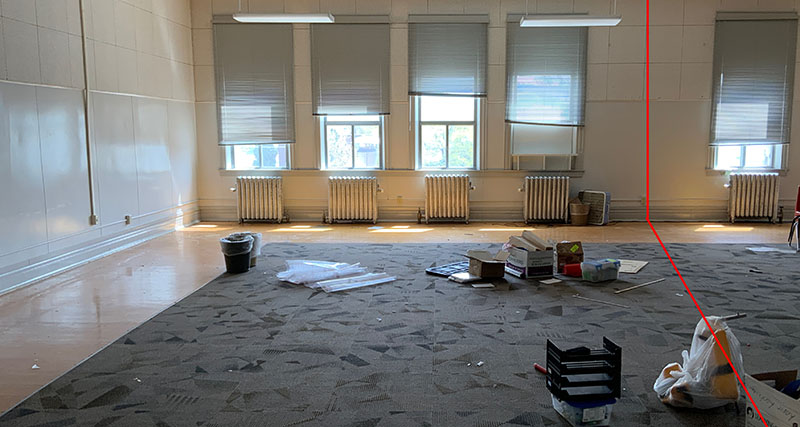
Before image of a meeting room used in a "Yellowstone" scene.
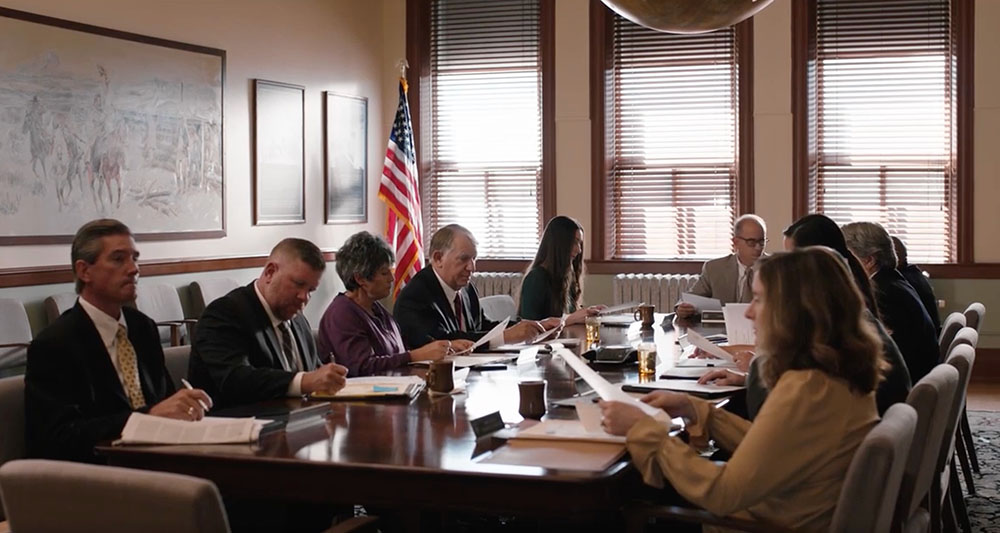
After image of a meeting room used in a "Yellowstone" scene.
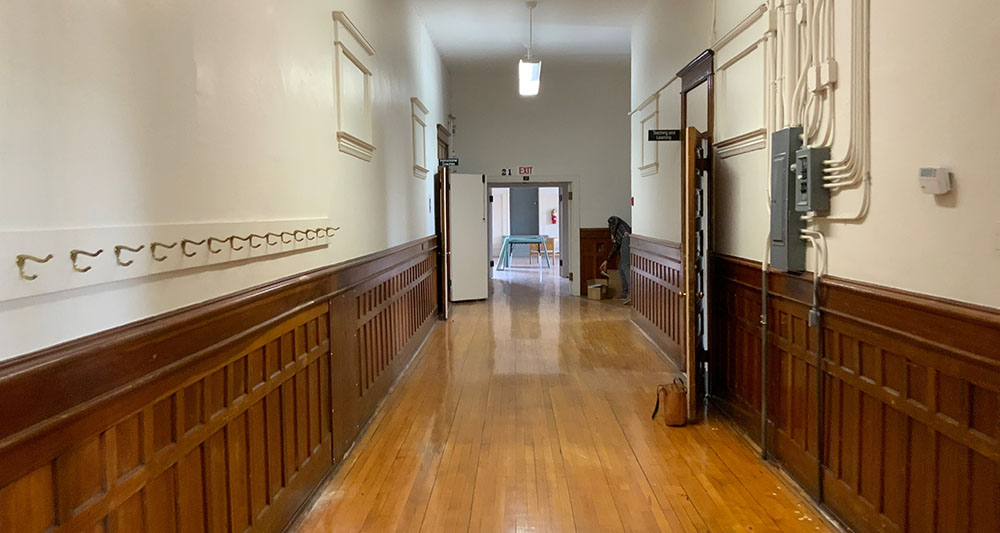
Before image of a hallway used in a "Yellowstone" scene.
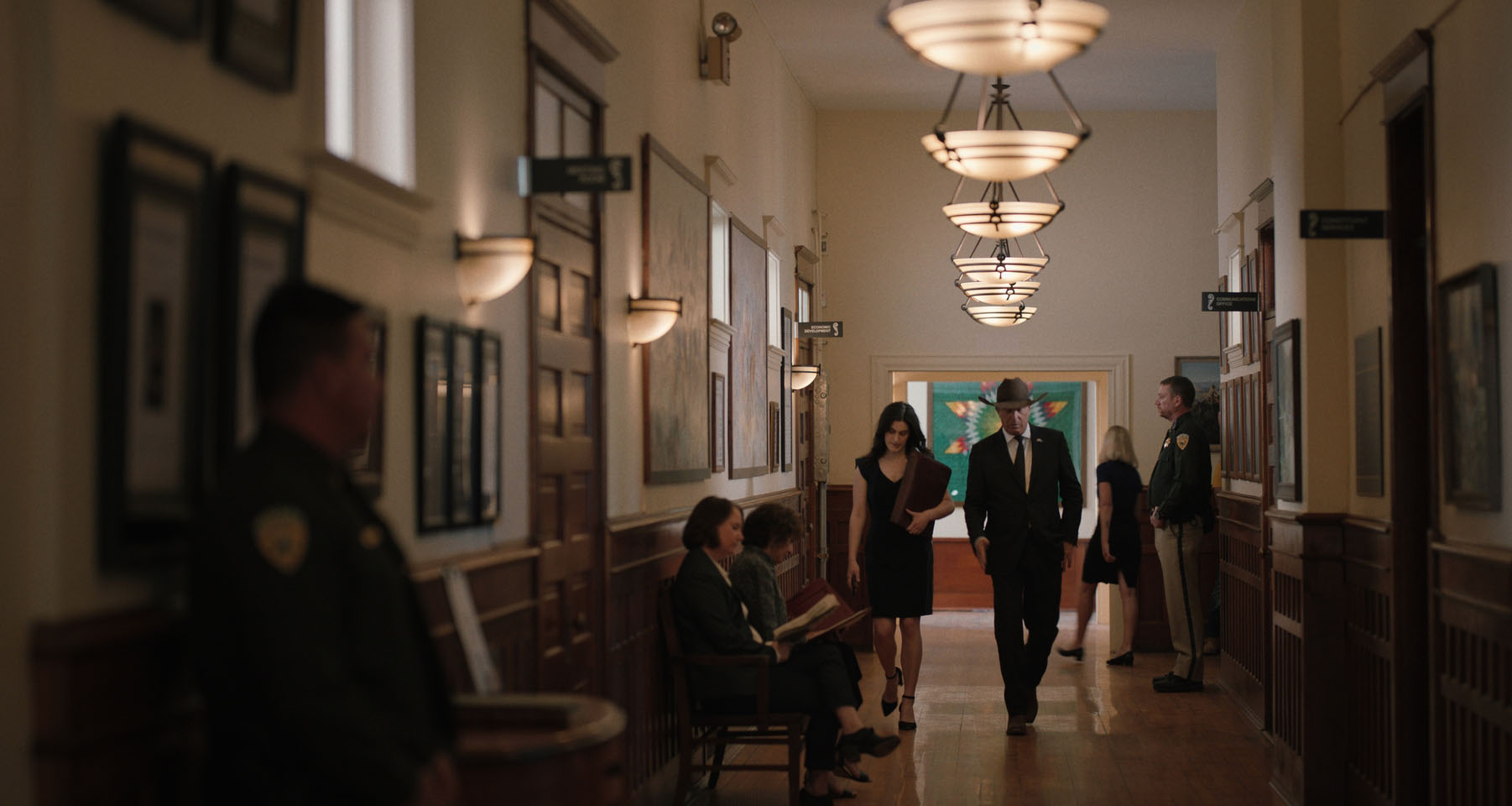
After image of a hallway used in a "Yellowstone" scene.
As part of the process of designing the sets, I create reference boards where I present my vision for the set. And in this instance, how I can transform this gymnasium into the Capitol meeting room. We basically built a set inside the gymnasium to cover the existing acoustic tiles. We brought in our own walls because they didn't want us to touch anything. I just tied our set with the color palette, and all the graphics, and all the details from the actual Capitol. That's one of my favorite transformations because I could envision it and everyone trusted me and let me my thing.
What do you love about being a production designer?
I love to see ideas come to life and it's all architecture. It's so fast though. It's choreography. You take the scene and then ask yourself, how are the actors going to interact? What are the important things that are needed? It's like a dance. It's the choreography through the space.
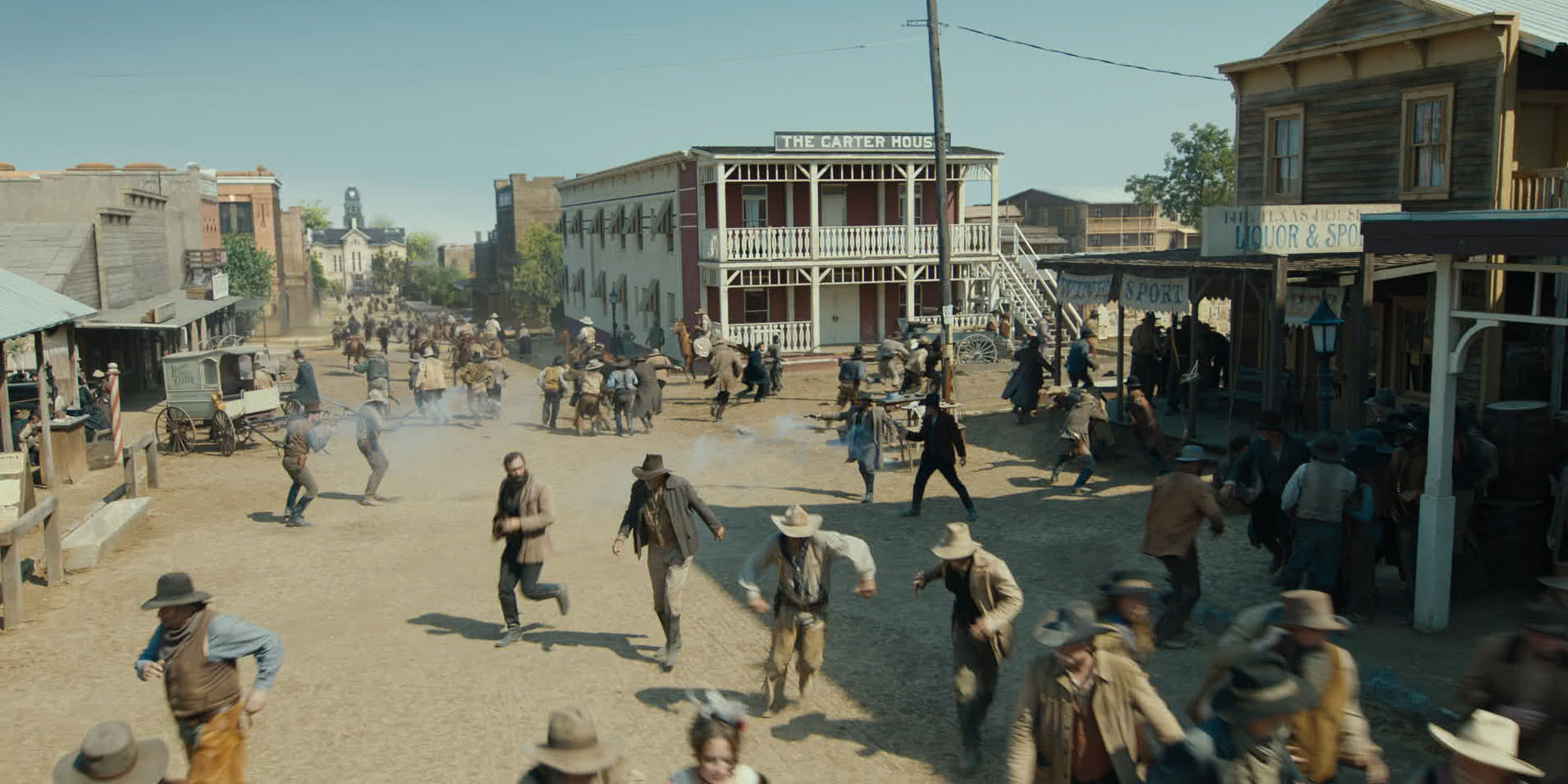
Working on “Yellowstone" has been great. I love the challenges. I love the new experiences and the day-to-day not knowing what the next adventure will be. It's the problem solving and quite exciting. It can be very rewarding when someone comments how authentic and organic a set looks.
What advice could you give to LSU students?
I've had to work extremely hard to get where I am today. I take every job so seriously and make every day my best day. Especially when it gets to the end, when things get rough and you're tired, but you’re only as good as your last day and I always want to end on a strong note.


